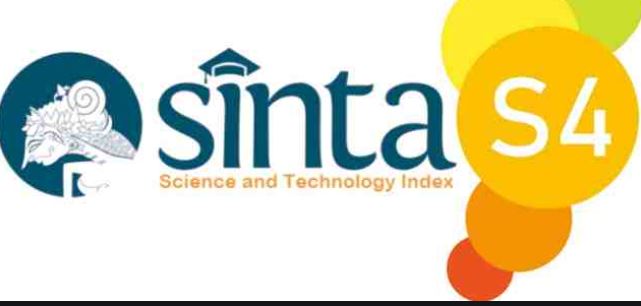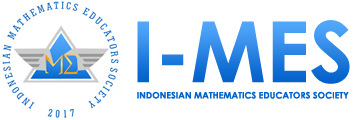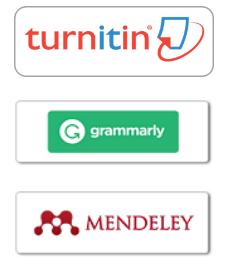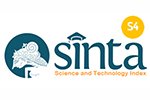EFFECTIVENESS OF THE STAD COOPERATIVE LEARNING MODEL IN ENHANCING LITERACY AND NUMERACY SKILLS AMONG FIFTH-GRADE STUDENTS
DOI:
https://doi.org/10.36706/jls.v7i1.80Keywords:
cooperative learning, literacy, numeracy, STAD model, student engagementAbstract
This study addresses the critical issue of low literacy and numeracy skills among elementary school students, as highlighted by national and international assessments. To bridge this gap, the research aims to evaluate the effectiveness of the Student Teams Achievement Division (STAD) cooperative learning model in improving literacy and numeracy skills. The study employed a Classroom Action Research (CAR) design, conducted in two cycles with 20 fifth-grade students from SD Negeri 7 Palembang as participants. Instruments included lesson plans, observation sheets, literacy-numeracy tests, and field notes. Data were collected through observations and tests and analyzed using descriptive quantitative and qualitative methods. The findings indicate significant improvement in literacy and numeracy skills, with 90% of students categorized as “Good” or “Very Good” in Cycle II, compared to 70% in Cycle I. Student engagement also increased from 55% in Cycle I to 75% in Cycle II. The study demonstrates the potential of the STAD model to create collaborative learning environments that foster critical thinking, problem-solving, and active participation. This research contributes to the theoretical framework of cooperative learning and offers practical implications for enhancing foundational competencies in alignment with the Kurikulum Merdeka and Sustainable Development Goals (SDGs).
Downloads
References
Alex, J., & Mammen, K. J. (2018). Students’ understanding of geometry terminology through the lens of Van Hiele theory. Pythagoras. 39(1). 1-8. https://doi.org/10.4102/pythagoras.v39i1.376
Ariawan, I. P. W., Ardana, I. M., Divayana, D. G. H., & Sugiarta, I. M. (2024). Scoring rubric design to measure the ability to prove plane geometry problems not accompanied by image visualization. Jurnal Elemen. 10(1). 70–88. https://doi.org/10.29408/jel.v10i1.22550
Arista Rizki, N. (2018). Analytic Geometry. http://math.fmipa.unmul.ac.id/index.php/nanda/
Armah, R. (2024). Geometric Thinking of Prospective Mathematics Teachers: Assessing the Foundation Built by University Undergraduate Education in Ghana. Teacher Education and Curriculum Studies. 9(2). 40–51. https://doi.org/10.11648/j.tecs.20240902.12
Artigue, M. (2009). Didactical design in mathematics education. In C. Winsløw (Ed.). Nordic research in mathematics education. Sense Publishers.
Bleeker, C. A. (2011). The relationship between teachers’ instructional practices and learners’ levels of geometry thinking. https://api.semanticscholar.org/CorpusID:116806562
Breyfogle, M., & Lynch, C. (2010). van Hiele Revisited. Mathematics Teaching in the Middle School. 16. 232–238. https://doi.org/10.2307/41183561
Buchbinder, O. (2020). Instilling Proof and Reason. Https://Www.Unh.Edu/Unhtoday/2020/01/Instilling-Proof-and-Reason.
Common Core State Standard for Mathematics. (2010). https://corestandards.org/wp-content/uploads/2023/09/Math_Standards1.pdf
Clements, D. H. (1996). Teaching elementary school mathematics. https://www.researchgate.net/publication/258933244
Clements, D. H., & Battista, M. (1992). Geometry and spatial reasoning. https://www.researchgate.net/publication/258932007
Epp, S. S. (2011). Discrete Mathematics with Applications. Brooks/Cole.
Fuys, D. J. (1988). The van Hiele Model of Thinking in Geometry among Adolescents. Journal for Research in Mathematics Education Monograph. 3. 1-196. https://api.semanticscholar.org/CorpusID:118373716
Gutierrez, A., Pegg, J., & Lawrie, C. (2004). Characterization of students’ reasoning and proof abilities in 3-dimensional geometry. https://www.researchgate.net/publication/237379333
Hanna, G. (1995). Challenges to the importance of proof. http://www.jstor.org/page/info/about/policies/terms.jsp
Hanna, G. (2018). Reflections on Proof as Explanation. In A. J. Stylianides & G. Harel (Eds.), Advances in Mathematics Education Research on Proof and Proving: An International Perspective. 3–18. Springer International Publishing. https://doi.org/10.1007/978-3-319-70996-3_1
Hanna, G., & de Villiers, M. (2008). ICMI Study 19: Proof and proving in mathematics education. ZDM-International Journal on Mathematics Education. 40(2).
Hanna, G., & de Villiers, M. (2021). Correction to: Proof and Proving in Mathematics Education. C1–C1. https://doi.org/10.1007/978-94-007-2129-6_20
Hanna, G., & Sidoli, N. C. (2007). Visualisation and proof: a brief survey of philosophical perspectives. ZDM. 39. 73–78. https://api.semanticscholar.org/CorpusID:54879221
Hohol, M. (2019). Foundations of geometric cognition. In Foundations of Geometric Cognition. Taylor and Francis. https://doi.org/10.4324/9780429056291
Indonesian Mathematics Educators Society (I-MES). (2004). Panduan Penyusunan Kurikulum S1 dan S2 Pendidikan Matematika. [Guidelines for Developing Undergraduate (S1) and Master's (S2) Curriculum in Mathematics Education]. 1-24. https://i-mes.org/wp-content/uploads/2024/12/20241212-Panduan-Penyusunan-Dokumen-Kurikulum-S1-dan-S2-Pendidikan-Matematika-I-MES.pdf
Jones, K., Ludwig, M., Ding, L., Mithalal, J., & Yao, Y. (2024). Teaching and Learning of Geometry at Secondary Level. 351–355. https://doi.org/10.1142/9789811287152_0033
Jones, K., & Rodd, M. (2001). Geometry and proof British Society for Research into Learning Mathematics Geometry Working Group GEOMETRY AND PROOF A report based on the meeting at Manchester. 95-100. https://www.researchgate.net/publication/279502166
Jones, K., & Tzekaki, M. (2016). Research on the Teaching and Learning of Geometry. In The Second Handbook of Research on the Psychology of Mathematics Education. 109–149. SensePublishers. https://doi.org/10.1007/978-94-6300-561-6_4
Maarif, S., Alyani, F., & Pradipta, T. R. (2020). The implementation of self-explanation strategy to develop understanding proof in geometry. JRAMathEdu (Journal of Research and Advances in Mathematics Education). 5(3). 262–275. https://doi.org/10.23917/jramathedu.v5i3.9910
Maarif, S., Wahyudin, W., Alyani, F., & Pradipta, T. R. (2020). Kemampuan Mengkonstruksi Bukti Geometri Mahasiswa Calon Guru Matematika Pada Perkuliahan Geometri. [The Ability to Construct Geometric Proofs of Prospective Mathematics Teacher Students in Geometry Courses]. Jurnal Elemen. 6(2). 211–227. https://doi.org/10.29408/jel.v6i2.2012
Mariotti, M. A., & Pedemonte, B. (2019). Intuition and proof in the solution of conjecturing problems’. ZDM. 51(5). 759–777. https://doi.org/10.1007/s11858-019-01059-3
Mawarsari, V. D., Waluya, St. B., & Dewi, N. R. (2023). Profile of Students’ Geometric Thinking Ability in Terms of Van Hiele Level. Proceedings of the 1st Lawang Sewu International Symposium on Humanities and Social Sciences 2022 (LEWIS 2022). 109–117. https://www.atlantis-press.com/proceedings/lewis-22/125988113
Mayberry, J. (1983). The Van Hiele Levels of Geometric Thought in Undergraduate Preservice Teachers. In Source: Journal for Research in Mathematics Education. 14(1). http://www.jstor.org/stable/748797?seq=1&cid=pdf-reference#references_tab_contents
Mukuka, A., & Alex, J. K. (2024). Student Teachers’ Knowledge of School-level Geometry: Implications for Teaching and Learning. European Journal of Educational Research. 13(3). 1375–1389. https://doi.org/10.12973/eu-jer.13.3.1375
Naufal, M. A., Abdullah, A. H., Osman, S., Abu, M. S., Ihsan, H., & Rondiyah. (2021). Reviewing the Van Hiele model and the application of metacognition on geometric thinking. International Journal of Evaluation and Research in Education. 10(2). 597–605. https://doi.org/10.11591/ijere.v10i2.21185
Niyukuri, F., Nzotungicimpaye, J., & Ntahomvukiye, C. (2020). Pre-service teachers’ secondary school experiences in learning geometry and their confidence to teach it. Eurasia Journal of Mathematics, Science and Technology Education. 16(8). 1-12. https://doi.org/10.29333/EJMSTE/8334
Polya, G. (1945). How to Solve It: A New Aspect of Mathematical Method. https://doi.org/https://doi.org/10.2307/j.ctvc773pk
Ramírez-Uclés, R., & Ruiz-Hidalgo, J. F. (2022). Reasoning, Representing, and Generalizing in Geometric Proof Problems among 8th Grade Talented Students. Mathematics. 10(5). 789. https://doi.org/10.3390/math10050789
Reid, D. A., & Knipping, C. (2019). Proof in Mathematics Education. In Proof in Mathematics Education. BRILL. https://doi.org/10.1163/9789460912467
Ruseffendi, E. T. (1988). Pengantar kepada membantu guru mengembangkan kompetensinya dalam pengajaran matematika untuk meningkatkan CBSA : perkembangan kompetensi guru [An Introduction to Helping Teachers Develop Their Competence in Mathematics Teaching to Enhance Active Student Learning (CBSA): Teacher Competence Development]. https://api.semanticscholar.org/CorpusID:172311688
Schoenfeld, A. H. (1994). What do we know about mathematics curricula. The Journal of Mathematical Behavior. 13. 55–80. https://api.semanticscholar.org/CorpusID:122735591
Scristia, S., Meryansumayeka, M., Safitri, E., Araiku, J., & Aisyah, S. (2022). Development of Teaching Materials Based on Two-Column Proof Strategy on Congruent Triangle Materials. Proceedings of the 2nd National Conference on Mathematics Education 2021 (NaCoME 2021). https://www.atlantis-press.com/proceedings/nacome-21/125972955
Scristia, S., Yusup, M., & Hiltrimartin, C. (2021). Pengaruh Strategi Flow Proof pada Perkuliahan Struktur Aljabar terhadap Kemampuan Mahasiswa dalam Menganalisis Pembuktian. Jurnal Gantang. 6(1). 39–45. https://doi.org/10.31629/jg.v6i1.2782
Sfard, A. (2008). Chapter 6: Objects of mathematical discourse: What mathematizing is all about. In A. Sfard, Thinking as communicating: Human development, the growth of discourses, and mathematizing. Cambridge University Press.
Stylianides G. (2008). Reasoning and proof, framework Stylianedes. FLM Publishing Association, Edmonton, Alberta, Canada.
Stylianides, G., Stylianides, A., & Weber, K. (2017). Research on the teaching and learning of proof: Taking stock and moving forward. In book: Compendium for research in mathematics education. 237-266. Publisher: National Council of Teachers of Mathematics
Sumarni, Hapizah, & Scristia. (2020). Student’s triangles congruence proving through flow proof strategy. Journal of Physics: Conference Series. 1480(1). https://doi.org/10.1088/1742-6596/1480/1/012030
Usiskin, Z. P. (1982). Van Hiele Levels and Achievement in Secondary School Geometry. CDASSG Project. https://api.semanticscholar.org/CorpusID:115884211
Van Hiele, P. M. (1986). Structure and Insight. A Theory of Mathematics Education. Academic Press.
Vieira, A. F. M., & de Costa Trindade Cyrino, M. C. (2022). Geometric Thinking: Reflections Manifested by Preservice Mathematics Teachers in van Hiele Model Studies. Acta Scientiae. 24(8). 286–314. https://doi.org/10.17648/acta.scientiae.7164
Watan, S., & Sugiman. (2018). Exploring the relationship between teachers’ instructional and students’ geometrical thinking levels based on van Hiele theory. Journal of Physics: Conference Series. 1097(1). https://doi.org/10.1088/1742-6596/1097/1/012122
Weingarden, M., & Buchbinder, O. (2023). Teacher learning to teach mathematics via reasoning and proving: a discursive analysis of lesson plans modifications. Frontiers in Education. 8. https://doi.org/10.3389/feduc.2023.1154531

Downloads
Published
How to Cite
Issue
Section
Citation Check
License
Copyright (c) 2025 Cecil Hiltrimartin, Yusuf Hartono, Somakim, Budi Mulyono, Destiana Wati, Pedi Agus Susanto, Marta Aulia

This work is licensed under a Creative Commons Attribution-NonCommercial-ShareAlike 4.0 International License.











